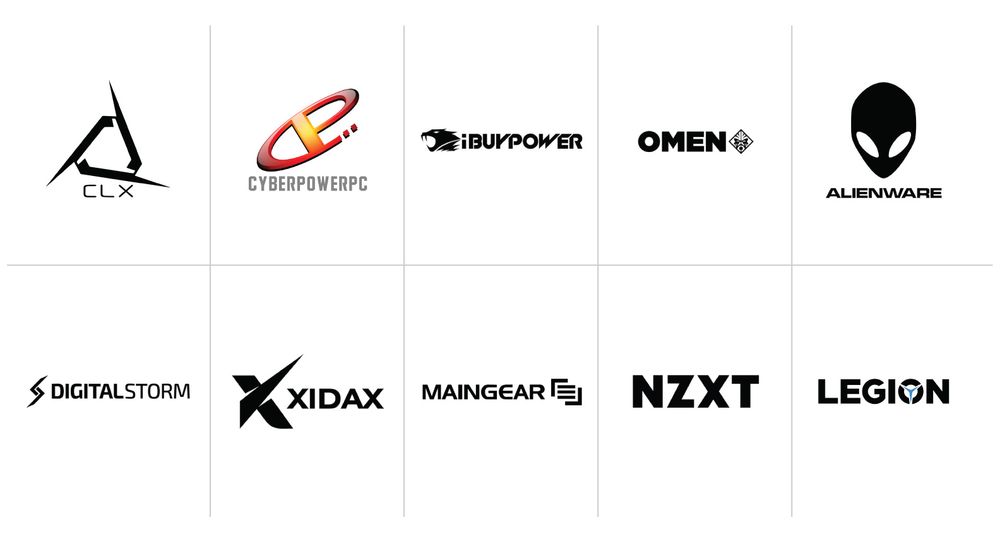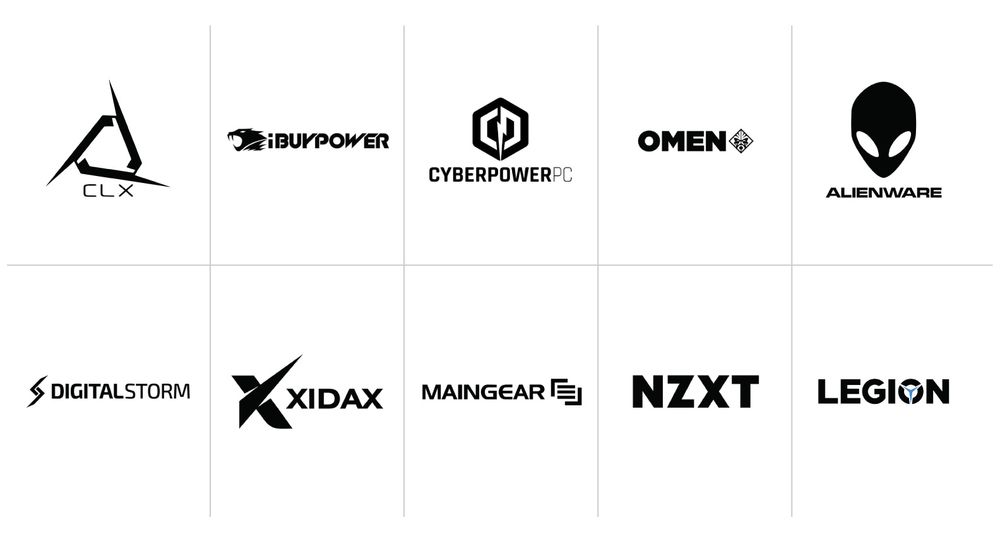Tips for rebranding when they don’t want a rebrand
Over the past 25 years I’ve worked in branding and marketing, I’ve probably made hundreds of logos. Whether a brand is new and young or old and well-known, it can often face the same problems. But one thing that differs from older brands that have been around for a long time is that the owners often have a long-standing fondness for the current logo.
Most of the time, these CEOs and C-Level decision-makers created the current brand identity. This could have happened years or decades ago so that they will be very attached to these old logos.
When I started working with CyberPowerPC in 2015, their brand identity had remained unchanged for 20 years. Despite my initial eagerness to implement a rebranding strategy, the CEO and management hesitated to make changes. It took me a year of slow and passive introduction of ideas to convince them to consider a rebrand. Eventually, they became excited about it.
Key Takeaways (TLDR)
- Decision-makers are often emotionally or logically attached to existing logos, leading to resistance against rebranding for various reasons such as sentimentality, cost concerns, or superstitions.
- Leveraging a “competitive logos matrix” helps place your brand in context among competitors, subtly motivating decision-makers to consider how their brand compares and could improve.
- Introducing new logo concepts gradually and unobtrusively can help acclimate decision-makers to the idea of a rebrand, allowing them to evaluate options more logically over time.
- Tangible mockups, such as business cards and product packaging, provide a concrete way for decision-makers to visualize how new logos will function in real-world applications, aiding in more informed decisions.
- The article emphasizes that effective rebranding is a slow and nuanced process that considers various resistances and uses psychological and visual strategies to encourage openness to change.
Here are my tips for how to get them to consider a rebrand
In this article, I will walk you through the logical, financial, superstitious, and emotional reasons why a company hesitates to change its logo. I will also provide tips and tricks for making decision-makers embrace the change.
- Understand the factors preventing your client from wanting a rebrand.
- Understand the competition and your brand’s place among them.
- Creating a comfortable environment to introduce new logos.
- Introducing new logos into the familiar competitive matrix.
- Mockup real tangible uses of the new logos.
Top Reasons Why People May Be Resistant To Rebranding
Logical Reasons For Rebranding Resistance
This attachment can make a lot of sense, like when someone says, “If it’s not broken, why fix it?” Even a modernization or purely aesthetic reason may not convince them that a change is necessary.
Financial Reasons For Rebranding Resistance
It could also be financial, such as the worry of how expensive it will be to alter the logo across all of their assets, such as packaging, website, letterheads, and business cards, not to mention trademarks and copyrights, which can be difficult and costly.
Superstitious Reasons For Rebranding Resistance
Some may consider it superstitious. I’ve worked with several CEOs who believe their logo is lucky and that changing it could ruin their luck.
Emotional Attachment Reasons For Rebranding Resistance
Finally, emotional reasons. Some people may be too connected to a logo to let go. This is difficult since their love for their present brand is so deep that anything else feels and looks inferior.
The enemy of my client is my friend.
You can distinguish between a bad logo and a good one as a designer. Still, decision-makers involved in the branding process may need help seeing the deeper value of a logo. Especially if a brand is doing well despite having an unappealing logo, this often justifies why decision-makers may not see a need for a new one.
However, decision-makers care a lot about how their brand compares to others. They want their brand to be as easy to remember as their competitors. So, it’s important to set up a sense of hierarchy and tell them where their brand fits in this hierarchy. By doing so, it takes away the focus on the visual aspects of the logo and highlights its functional aspect. For instance, decision-makers should consider what aspects of the logo are common in bigger and more successful brands and how their logo differs. This might be a factor that could limit their brand’s growth potential.
Steps By Step Tips For Rebranding
Step 1: Establishing the perception of hierarchy.
So, let’s talk about competitive logos matrices. They’re a great way to get an idea of where your brand stands in relation to your competitors. It’s a piece of paper with a bunch of squares on it, and each square has a logo from one of your competitors and your logo.
The idea is to put the logos in order from right to left, with the best logos or logos that you think your brand should be more like on the right and the least desirable ones on the left. It’s not by accident that the logos on the right are usually for the bigger, more successful companies, while those on the left are usually for the smaller, less well-known brands.
Why is that? Successful brands have more money to spend on marketing, which means they’re more visible. We’ve all seen them more often than the other brands, making us more familiar with them and more like them.
But here’s the kicker: you should put your brand somewhere in the middle or to the left of your competitors. Why? It’s a psychological trick, but putting your brand next to smaller brands makes it seem smaller and less successful. People who care a lot about their brand will feel they need to be in the right place when they see this. They’ll think it needs to move to the right more, and they’ll start to question their place in the brand and wonder if other people see it the same way.
It’s also important to note that you want to make sure the logo of your direct competitor is right next to yours. This will make them feel more competitive and want to work harder to beat them. When you see their logo just a bit ahead of yours and the logos of the bigger brands, it’s a motivator to do better.

Once you have your competitive logos matrix, tape it to the wall near your desk. Put it where your CEO can see it every time they come to see you or walk by. They might not say anything initially, but they’ll think about it. They can see where your brand stands in comparison and who your main rival is.
It is critical that at this point if they ask you what’s going on, say that you’re doing some brand research. There’s no need to go into too much detail because the best way to help them confirm their ideas is to let their imagination run wild.
So, that’s the gist of it. A competitive logos matrix can be a useful tool for your brand in helping you lead the way into a more detailed discussion about a rebrand later.
Step 2: Introducing the new logos
The next step in my branding process was creating new logo ideas. It’s important to have a strong, recognizable logo that represents your brand well. I started by sketching out different ideas and putting them on the wall. I narrowed it down to the top 10 I liked and put them on a 2×8 grid, just like my competitive matrix.
The new logos next to the competitive matrix help tie the ideas together. One set of logos showed how our original logo looked compared to our competitors, giving people an idea of where we stand in the competition. The other set showed possible alternatives to our current logo that could be used in the future.
When designing new logos, I usually stick to black and white. A good logo should stand on its own without relying on color. It also helps keep the design simple and ensures the logo can be used in different ways, such as an inverted version in black or a single-color print.
As with the competitive matrix, I only said a little when the CEO came by and saw the new logos. If he asked, I’d say, “I’m trying out some ideas.” Keeping them from pushing them too soon or influencing their opinion is important. The goal is to get them used to trying new logos and slowly teach them about the different options.
The longer they see these new logos, the more they will get used to them. Over time, they’ll evaluate them more logically instead of just based on their feelings. For example, they might ask themselves if the new logo is easier to understand or more noticeable than the old one. They might also consider if the logo’s style looks more like that of successful brands.
As they evaluate the new logos, they’ll notice that the old logo needs to fit in with the competitive matrix. This will make them wonder which new logos could replace our old logo in the matrix and fit better with the others.
So, that’s how I came up with new logo ideas and slowly introduced them to the CEO. It’s all about taking small, incremental steps to ensure everyone is comfortable with the process and open to new ideas.
Step 3: Replace the old logo with some new logos in the competitive matrix
After a few months, they should be familiar with these new logos, and you should also be able to tell which two or three stand out and could be the final logos. You should make two or three new competitive matrix sheets with the new logo instead of the old one. When you’re done, stick them to the old competitive matrix and the new logos sheet. Now, you’ve taken all the subconscious questions on their minds and tested them to see if they are compatible.

You can start a dialog with them about what they think about the new logos. But you don’t want to ask them, “What do you think of these logos?” Instead, let them ask you themselves. They probably already have an idea of which ones they like best. By letting them ask you what you think, you can help shape their opinions by pointing out things they might not have thought about other than how it looks.
It’s also a good idea to include how the new logo compares to the old logo and the competition. This will help them consider all the important things when choosing a new logo. You want them to say something when they consider these ideas. So, even after you’ve told them how the logos were made and why you chose the final options, please don’t ask them to choose immediately. They might need time to consider and understand these ideas before deciding.
Step 4: Put it into real world applications
When brainstorming new logo ideas, I like to create mockups of things where the logo would be useful and relevant, such as business cards, packaging, products, and websites. These must be tangible, so I turned to Moo.com, a website that lets you create different versions of the same card with different logos. This way, I could see how the logo would look in different contexts and how it would fit with the overall design.
For packaging, I like to make small versions of the products to understand how the logo would look on the actual packaging. If I have the dieline for a product’s packaging, I can print it out on a color printer, cut it out, and fold it into a mockup with different logos. By doing this, I can better understand how the logo interacts with the rest of the design and how it stands out.

After creating the mockups, I attached the different business card designs to the corresponding competitive matrices for each logo. I gave a few of these to the CEO and advised him to take his time and think about each one before making a decision. The idea is to help the CEO envision himself giving a business card to someone and see how he feels about each design. Hopefully, one design will stand out and make him feel the best.
Once the CEO had a chance to look at the different designs, he began showing them to others, like vendors and clients, to gather feedback. This way, we could get an outside perspective and see how others perceive the logo. After taking into account all the feedback, we were able to settle on one final design.
It’s important to take the time to create mockups and gather feedback from different sources to ensure the logo design is the best. Doing this ensures that the logo is visually appealing, fits the overall branding, and resonates with the target audience.
Wrapping Up
Here are things to remember and the steps you can take to help you with your rebrand.
- Understand the many factors preventing your client or decision-makers from wanting a rebrand. These could be logical reasons, financial reasons, superstitious reasons, and emotional reasons. Identifying which of these you are dealing with will help you to understand the challenges you might face and how to overcome them.
- Understand the competition and your brand’s place among them. The stewards of the brand are more likely to care about it when it’s presented than the competition. Use visuals to help establish a perception of the brand’s hierarchy. Who is at the top, who is at the bottom, and where does your brand fit into this matrix?
- Subtly introduce the new logos, indirectly, without any pressure. Let it just exist around the places where decision-makers will see them to allow them to become familiar with the logos and comfortable with the idea of a rebrand.
- Begin to introduce the new logos into the familiar competitive matrix and use the power of the hierarchy to establish the preference for the new logos by positioning them in a more advantageous position higher than the original logo to create the perception that it is better.
- Apply the logos on real tangible mockups. This includes business cards, mockup packaging, products, etc. Things that can be held and felt are more powerful than mockups on-screen because they can’t be hidden or ignored. Having something physical on your desk or their desk allows them to absorb its impact more constantly and consistently over time, allowing them to build stronger opinions about it.
Frequently Asked Questions
Why is rebranding difficult?
Rebranding in terms of design can be both easy and difficult. It depends on the client and your relationship with them regarding how flexible they are to change and if you can properly leverage your expertise to convince them to agree with your direction. The other difficulty is dealing with the public’s acceptance of the rebrand. You probably won’t face harsh criticism if your brand is fairly new. However, if you rebranding a well-known, established brand, be prepared for inevitable backlash. Check out my article Why Logo Design Is Only A Small Part Of Your Brand Strategy to learn more about how to deal with the aftermath of rebranding.
What to do while rebranding?
When performing a rebrand, you must first identify the purpose for rebranding. Understanding the purpose will help guide the degree of rebranding needed. You’ll also need to determine which aspects of the brand are being rebranded. Does it include the icon, the logo, the tagline, or the color palette? Once the purpose is defined, you will need to begin research to understand the competitive landscape, changes in your target market, and so on to provide you with a bigger picture from which you can differentiate yourself from your competitors while appealing to your target market.
How do brands rebrand?
Rebranding can have many shades to it. On the lighter side, brands could change a color or slightly adjust the font. Or it could be something more drastic, such as completely changing the logo, colors, and, in some rare cases, changing the entire name. The decision to rebrand could be a decision made by key stakeholders based on a whim. Still, rebrands are often either a response to the need to modernize the brand, change how it is perceived, or a response to something negative that requires a rebrand to create some buffer from the previous branding.







